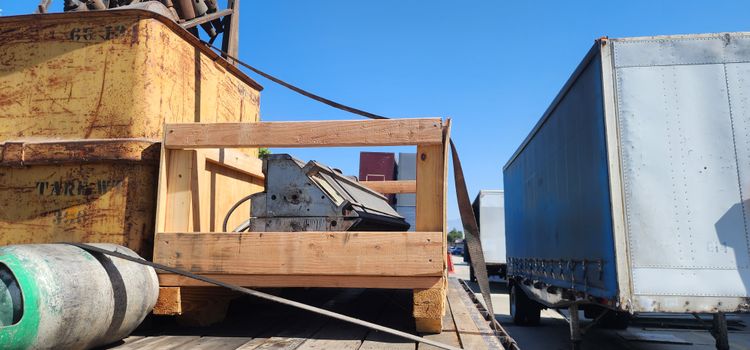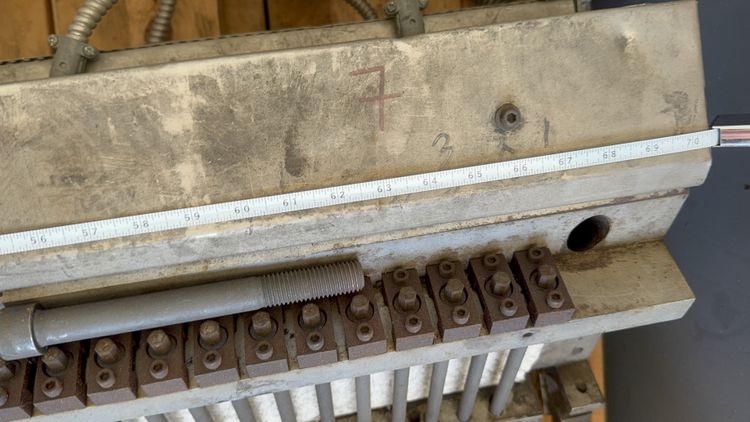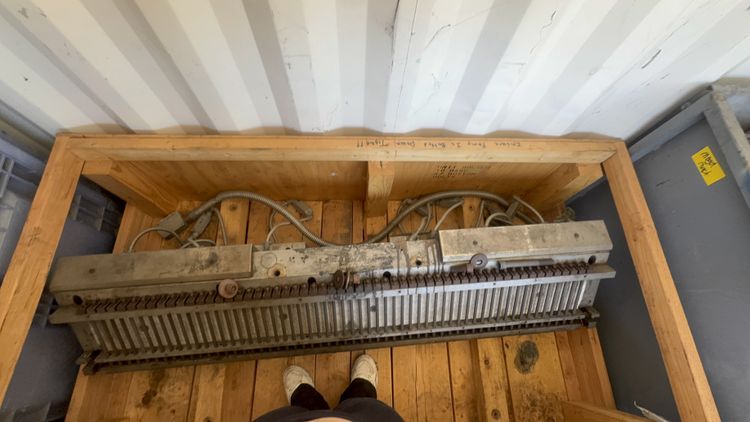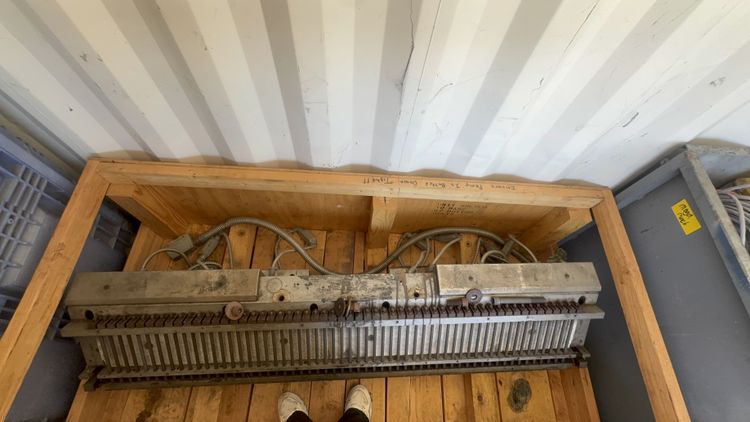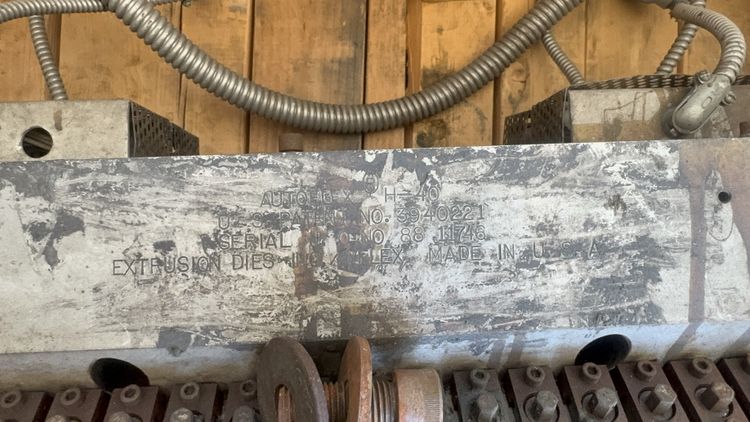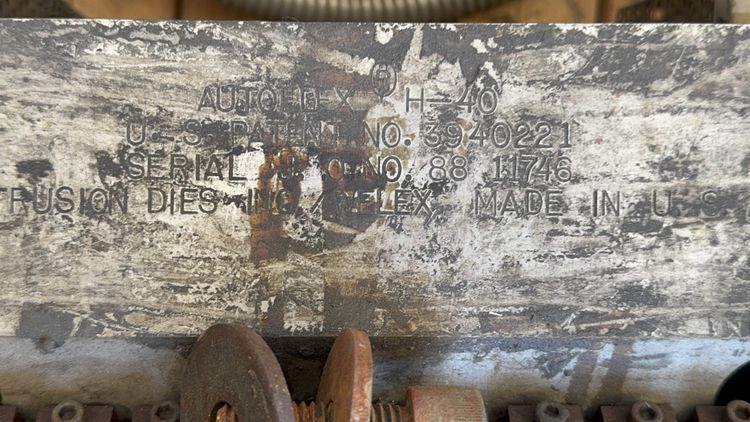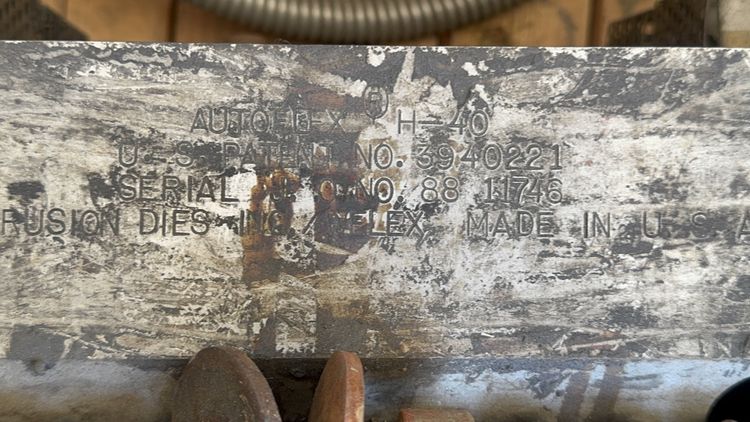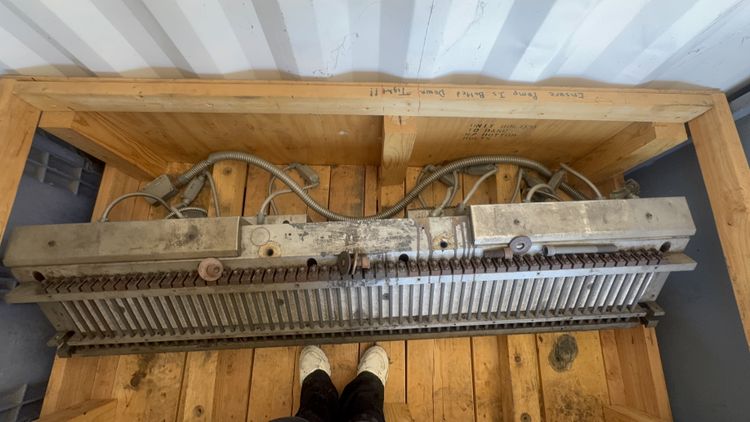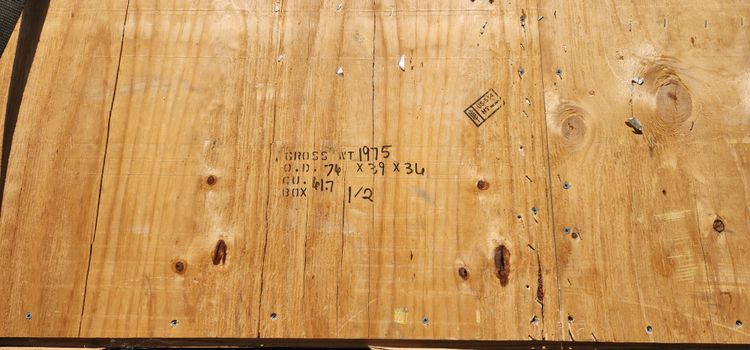Welex Autoflex H40
AMERICA North (USA-Canada-Mexico)
WELEX AUTOFLEX DIE 66"
Model: Autoflex H40 flexible lip extrusion die
Patent: U.S. Patent No. 3,940,221 (related to thermal lip-adjustment system)
Serial Number: 88-11746
Manufacturer: Extrusion Dies, Inc. (Welex / EDI)
Width / Slot Length: ~66″ (as you indicated; must verify exact die opening width)
Lip Opening Range: typically in Autoflex setups 0.001″ to ~0.030″ (depending on design)
Feed Type: likely back (center) feed (common for many Autoflex H40 sheet dies)
Adjustment Method: electrical heating + air cooling of lip-adjustment blocks (thermal expansion/contraction)
Body / Material: heavy machined metal, heat stable die materials (steel, tool steel, etc.)
Cooling / Heating Ports: each adjustment block (translator) has isolated heating and cooling paths
Weight: likely several thousand pounds (comparable dies ~4,200 lb for 98″ model)
Overall Dimensions: to be measured (length, height, depth)
Condition: used / needs inspection, potential refurbishment
Description
This is a 66-inch Autoflex H40 flexible lip extrusion die built under U.S. Patent 3,940,221 by Extrusion Dies, Inc. (Welex / EDI). It uses advanced thermal expansion technology to fine-tune the lip opening across the width of the die. The model is designed for continuous sheet, film, or web extrusion, allowing precise control over thickness profile. The die includes multiple translator (adjustment) blocks that expand or contract thermally (via embedded heaters and cooling passages) to vary lip opening at discrete stations.
What It Does
Converts molten or flowable polymer (or other extrudable material) from a melt manifold into a flat sheet, film, or web through a slit (lip opening)
Maintains consistent thickness across the width by adjusting localized lip gap deviations
Enables dynamic compensation of nonuniform flow, temperature gradients, or polymer behavior
Works in automatic or semi-automatic mode (after initial mechanical adjustment)
Capabilities
Fine tuning of lip gap in very small increments (via thermal adjustment)
Real-time correction of thickness deviations when tied into gauging systems
Reduced manual intervention compared to purely mechanical dies
Supports a wide range of flowable materials: thermoplastics, potentially coatings, composite melts, etc.
Capable of maintaining tight tolerance across a wide width
Adapts to changing process conditions (temperature, flow, polymer viscosity variation)
Core Functions
Lip opening control — via multiple translator blocks (one per adjustment zone)
Thermal expansion & contraction — each translator contains a heater and separate cooling path to alter length and thereby open/close the lip locally
Feedback / automatic control (optional) — the patent describes integrating thickness gauges (e.g. beta-ray, X-ray) to drive automatic adjustment signals to die blocks
Manual override / trimming — operators can perform coarse adjustments mechanically before engaging the thermal fine tuning mode
Thermal isolation — the heating / cooling blocks are isolated from die body to minimize heat bleed and interference
Design Features & Benefits
Isolated translator blocks mitigate heat transfer from die body, helping stability. Automatic mode reduces operator intervention and minimizes profile faults.
Faster response: each translator can be cooled (air cooling) or heated rapidly to adjust faster than passive systems.
Differential adjustment capability: each zone is individually controllable for local tuning.
Compatibility with gauging systems: when paired with a thickness sensor, the system can dynamically maintain profile.
Manual fallback: even if the automated system is offline, the die can be trimmed or tuned manually
Robust heavy-duty construction: made to withstand typical stresses of extrusion lines
Applications & Industries
This die is suited for any industry requiring high-quality flat sheet, film, or web production with tight thickness control. Potential uses include:
Thermoplastic sheet and film (e.g. PET, ABS, PS, polyolefins)
Coating / lamination lines
Composite or filled polymer sheets
Plastic packaging film
Industrial films, foils or barrier films
Specialty sheets (optical, barrier, technical polymer sheets)
R&D / pilot lines where profile control is critical
Industries: plastics processing, packaging, extrusion compounding, specialty materials, contract extruders, R&D labs, film / sheet production facilities.
Machine Overview & Summary
This 66″ Autoflex H40 extrusion die is a premium, flexible-lip, thermally adjustable die constructed under U.S. Patent 3,940,221. It is engineered to convert melt flow into a flat sheet while continuously compensating for profile irregularities via individual translator blocks that expand or contract with precise temperature control. The design minimizes heat bleed, allows automatic feedback control, and reduces operator adjustment. The die is well suited for demanding sheet/film applications where uniform thickness across width is critical.

